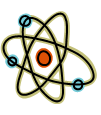July 30, 2011
|
Each unique different kind of its own
|
92656 hit(s)
Here's an odd sentence that I found in a chemistry textbook (2003 edition):
Today there are approximately 109 different kinds of atoms, each with its own unique composition.
So many things. Like:

- "Today": My admittedly imperfect understanding of the physical world is that elements are elements, and they exist outside of our understanding of time.
- "Approximately" 109? Not approximately 108? Not approximately 110? Not exactly 109?
- There are "109 different kinds" of atoms? Not just "109 kinds of"? You mean, each kind is different from the others?
- Each different kind of atom is moreover distinguished by having its own unique composition? (Isn't uniqueness already part of "different kind of"?)
- Each atom has "its own" unique composition, and not the composition of some other atom?
Dunno, seemed a bit ... sloppy ... to me.
 |
|

 |
|
